Vacha – Acorus calamus Uses, Research, Side Effects, Remedy
Vacha – Acorus calamus is very rich in medicinal values, used in Ayurvedic medicines since the times of Chakara and Sushruta. Improves speech, intelligence and more. It is called Sweet Flag in English
Botanical Name- Acrous calamus Linn.
Family- ARACEAE (Sooran kula)
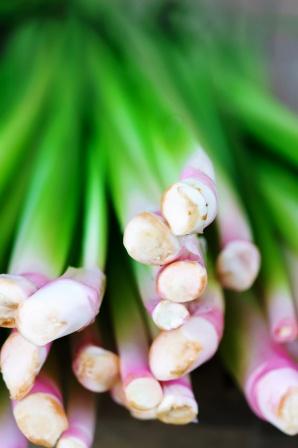
Table of Contents
Vernacular names
Names in different languages:
Hindi Name-Bach, Ghorbach, Safed bach
English Name- Sweet flag, Calamus, Myrtle grass
Kannada Name – Baje
Telugu Name- Vasa
Tamil Name- Vasambu, Pullai-valathi
Malayalam Name- Bavambu
Arabic name – Vaj, Vash, Oudul Vaj
Gujarati name – Gandhilo vaj, Godavaj
Kashmiri name – Vachi, Vaigandar
Persian: Agar, Agarturki, Vasa
Urdu: Bach, Vaj
Nepali Name – Bojho;
Unani: Vaj turki, Bacch;
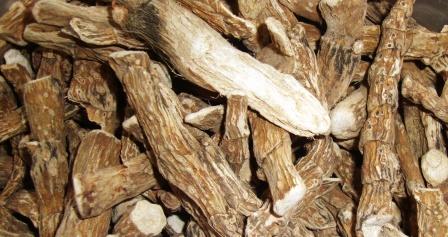
Sanskrit synonyms
Ugra gandha, ugra – having offensive nauseating smell,
Golomi – Rhizome of vaca has hairs over it resembling the hair of cow
Lomashi, jatila – Hairy rhizome
Sataparvika – Rhizome has numerous nodes
Shadgrandha – More than 6 nodes present in its rhizome
Haimavati
mangalya – Auspicious herb
Karshani – It help to reduce weight
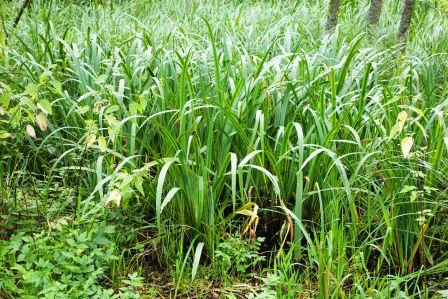
Classical categorization
Charaka-
Lekhaniya – Group of herbs having scraping quality, useful in obesity
Arsoghna – Group of herbs useful in piles treatment
Truptighna – Group of herbs that cure early satiation,
Asthapanopaga – Group of herbs used in decoction enema
Shirovirechaana – Group of herbs used in Nasya treatment
Sanjnasthapana – Group of herbs used in restoring consciousness
Sheeta prashamana – Group of herbs useful to relieve coldness
Susruta- Pippalyadi, Mustadi, Vachadi
Vagbhata- Mustadi, Vacadi, Vatsadi, Haridradi Chardana, Niruhana
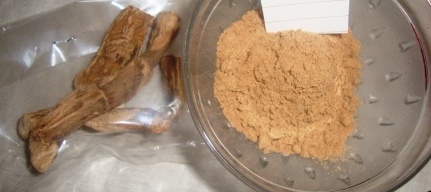
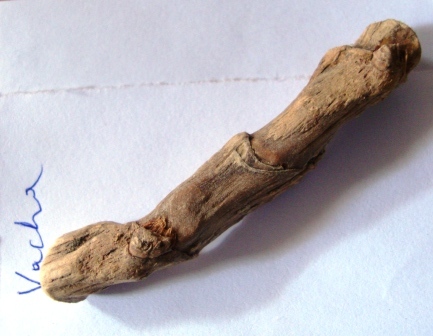
Distribution, varieties
Distribution- Cultivated in moist regions of India especially in Manipur, Nagaland, Kashmir. Also found in Srilanka. Grow in Marshy land .
Varieties of Vacha:
As per Charaka, there are two varieties –
Vacha – Acorus calamus
Shweta Vacha – white variety – Iris germanica / Parils plyphylla.
As per Bhavaprakasha, there are five varieties –
Vacha – Acorus calamus linn
Parasika Vacha (Haimavati) – Iris germanica Linn
Kulanjana – Mahabhari Vacha – Alpinia galanga Willd
Sthoola Granthi – Zingiber zerumbet Rose
Dveepantara Vacha – Chopachini – Smilax china
Morphology
Perennial terrestrial herb of marshy places
Stem – Stout, creeping
Rhizome – aromatic
Leaves – Sword shaped, erect, shar pointed, sheathing each other, midrib is stout parallel venation
Inflorescence – Spadix
Flower – Densely cover the entire spadix, greenish yellow
Fruit – Turbinate, prismatic, pyramidal
Useful part – Rhizome – Sub cylindrical light brown colour. The upper surface shows leaf scars, while the lower surface bears small raised circular root scars.
Chemical constituents
Acorus calamus chemical Constituents: Acolamone, Acorenone, Acoragermacrone, Acoramone, Acorone, Cis- & trans- asarone, B-& ofasarone, Azulena, Cadalene, Calamenone, Calamenene, Calamenol, Calamone, calamenone, Calamenenene, calarene, B- gurjune, Camphene, Eugenol, Telekin, Preisocalamendiol, Acoric acid, Calamen, Diol, Calamenone etc.
(Reference: Illustrated Dravyaguna VIjnana, Vol. II, by Dr JLN Shastry)
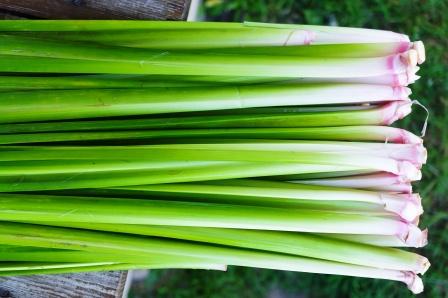
Medicinal properties
Acorus calamus medicinal Properties:
Rasa (taste)- Katu (pungent), Tikta (bitter)
Guna (qualities) – Laghu (lightness), Teekshna (strong, piercing)
Vipaka- Katu
Veerya- Ushna – Hot potency
Effect on Tridosha – Balances Kapha and Vata Dosha.
Prabhava – special effect – Medhya – improves intelligence
Pharmacological action – Vermifuge, Carminative, Sedative, Tranquilizer
Part used, dosage
Part Used: Sweet flag Rhizome
Dosage: Powder 125-500 mg in divided dose per day.
1 – 3 g ( For vamana panchakarma procedure )
Benefits
Vacha – Acorus calamus benefits:
Pachana – Digestive, relieves Ama Dosha
Vahnikrut, Deepana – improves digestion strength
Vamani – induces vomiting
Medhya – improves intelligence
Jeevani – enlivening
Vak prada – improves speech
Swaraprada – improves voice
Unmadahara – useful in schizophrenia
Apasmarahara – useful in epilepsy
Jantuhara – antimicrobial
Shoolahara – relieves abdominal colic pain
Vibandhahara – Relieves constipation
Adhmanahara – relieves bloating, gaseous distension of abdomen
Shakrut Mutra Vishodhini – cleanses feces and urine
Kantya – improves voice tone and quality, useful in throat disorders
Anilahara – useful in treating disorders of Vata Dosha imbalance such as neuralgia, paralysis, constipation, bloating, etc
Phirangahara – relieves syphilis
Rakshoghna, Bhutaghna – Useful against psychological imbalances and disorders
Vatajwarahara – useful in fever with bodyache
It is extensively used in obesity treatment. Especially as a herbal mix for powder massage (Udvartana).
Sanskrit verse
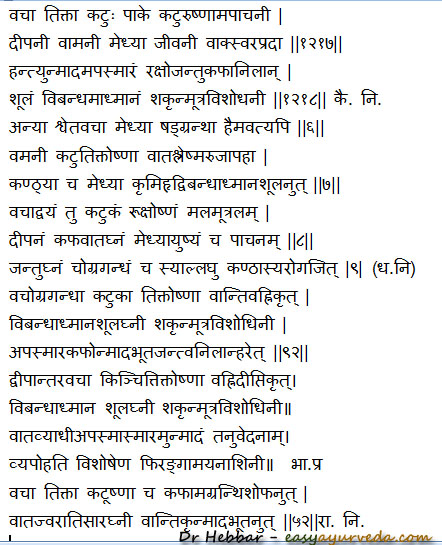
It induces uterine contractions. Hence, it is used in inducing delivery. During a difficult delivery, it is administered along with Black pepper root and saffron. It is also administered in dysmenorrhea.
Swarna Vacha
Swarna Vacha – Because of its efficacy to improve speech, memory and intelligence, it is administered along with A wire of Gold (Swarna). Read more about this remedy – Swarna Vacha
Acorus calamus oil
Acorus calamus oil has a tranquilizing effect, used in anxiety, dizziness, on external application.
Research
Attenuating effect in chronic constriction injury
Phytochemical analysis and anti-microbial activity
Radical scavenging potential
Side effects
Sweet flag – Acorus calamus side effects:
Because it induces contractions in the uterus, it is not safe to use this herb during pregnancy. It is best to avoid this during lactation.
It can be used in very minute quantities in children.
Because of its hot effect, some people with Pitta body type may find it difficult to tolerate this herb. To counter its side effects, saunf mixed with lemon juice is administered.
Interaction with medicines, supplements
Can this be used while taking Homeopathic medicine?
Yes. This product does not react with homeopathic medicine.
Can this medicine be continued while taking supplements like multivitamin tablets, Omega 3 fatty acids etc?
Yes. Generally, this product goes well with most dietary supplements. However, if you are taking more than one product per day, please consult your doctor for an opinion.
With western
medicines
Seek your
doctor’s advice if you are taking this product along with other western
(allopathic / modern) medicines. Some Ayurvedic herbs can interact with modern
medicine.
If both Ayurvedic and allopathic medicines are advised together, then it is
best to take Allopathic medicine first, wait for 30 minutes and then take the
Ayurvedic medicine.
Purification method
Vacha Shodhana – Purification process
Charaka and Sushruta have not mentioned about its purification procedure. However, it is mentioned in Chakradatta and Bhaishajya Ratnavali.
For purification, Acorus rhizomes are boiled successively in Gomutra (cow urine), Kashaya of Alambusha (Sphaeranthus indicus) and Panchapallava Kashayam.
This is followed by Bashpa Sweda (sweating / fomentation) with Surabhi Toya – A decoction prepared with Cinnamon, Musta, Bala, Kushta. Patraka, Usheera.
In some folklore methods of south India, Acorus rhizomes are kept dipped in cow milk or supernatant liquid of curd overnight, then washed in hot water, dried and preserved.
Ayurvedic medicines
Ayurvedic medicines with Sweet flag ingredient:
Kolakulathadi Choornam – Used for powder massage (udvartana) to relieve joint stiffness and to treat obesity
Manasamitra Vatakam – to improve intelligence, speech problems, etc.
Brahmi Vati – used in the treatment of depression, blood pressure etc.
Chandroday Varti – a wick, used for eye disorders. Used in the treatment of early stage of cataract, pterygium, growth over the eyes, etc
Vacha used in preparing Ayurvedic medicines
Vacha, along with other herbs such as Jatamansi, Agaru, Sandalwood, Camphor etc is used for fumigation of fermentation vessels, in the preparation of Arishta and Asava – Alcoholic Ayurveda medicines.
Vacha, along with other herbs such as Chitraka, Danti, Dravanti, Asafoetida, Coral, Bida salt and Sochal salt are used in preparing Madhyama – Teekshna Kshara.
Systemic Action
Externally – Reduce pain and inflammation. indicated in joint disorders, hemiplegia, Its juice can be used in conditions like tinnitus and ear pain
Internally – Nervous system – Improve intellect, act as nerve tonic, helps to regain consciousness. Indicated in Tremor, Insanity, Epilepsy, Hemiplegia and other diseases caused by vata dosha.
Digestive system – It is spicy in taste so it acts as a carminative. Induce vomiting and diarrhea in heavy doses. Indicated in Worm infestation, Hemorrhoids, constipation, loss of taste, bloating, abdominal cramp etc.
Circulatory System – Slow down the activity of Heart, Indicated in Hypertension.
Respiratory System – Indicated in vata kapha kasa and in hoarseness of voice, running nose, inflammation / swelling of throat
Excretory system – Even though Hot in nature it increases urine production, Indicated in painful micturition, Urinary calculi etc.
Reproductive System – Stimulate uterine contraction. Indicated in dysmenorrhea(Along with pippali and saffron),
Skin – Induce sweat production Indicated in various skin disorders
Indicated in fever – (Sannipata jvara, Fever in toddler during tooth eruption)
Having Lekhana (Scraping action).Prolonged use leads to tissue depletion . Indicated in obesity. Can be given for kids to promote intellect and delayed speech.









29 comments on “Vacha – Acorus calamus Uses, Research, Side Effects, Remedy”
G. UPENDRA SARMA,
i recollect, my parents and elders were using vasa on me
in my infancy, Feej greatly benefited by your article,Thanks.
mankindthoughtANAND
Vasa and Vach are two different plants.You used vasa as you wrote whereas the article is on vach.
Dr J V Hebbar MD(Ayu)
Hi, In Sanskrit, Vacha means the above herb – Sweet flag. It is called as Vasa in Telugu, Vasambu in Tamil.
But in Sanskrit, Vasa is a different herb, called Vasaka – Adhatoda vasica – details here – https://www.easyayurveda.com/2014/07/25/vasaka-adhatoda-vasica-uses-side-effects-research/
Dr.SG. Ramaesh
very informative.
Tushar
Hello Dr. Hebbar,
Just came across this article on a very reliable source on the internet.
It strictly warns us against the consumption of Acorus Calamus due to the presence of β-asarone.
Please post your views on the same.
Posting the Link here: http://examine.com/supplements/acorus-calamus/
Dr J V Hebbar MD(Ayu)
Hi, there are many restrictions on Acorus calamus. This herb is banned in USA. That is probably the reason, the purification procedure is explained for this. (see in the article, above).
Also read here – http://www.ncbi.nlm.nih.gov/pmc/articles/PMC3667428/
Lalitha chidambaram
Will it make d tongue thicker?so salaiva ll secrete more n always n d child always pours put d salaiva more n more
Dr J V Hebbar MD(Ayu)
No.
Dr J V Hebbar MD(Ayu)
Thanks for sharing your valuable feedback on acorus. Modern methods of testings and hypotheses do not always hold good for testing the authenticity of ancient Ayurvedic herbs. 🙂
shardul
does this herb protects our surrounding from snake? because of its smell?
shardul
Also can anyone help me for snake bit, actually Indian russell viper snake had bit my dog. We had give the anti venom, but there are chances of gangerin which Ayurvedic Medicine will help the dog to recover Please let me know soon.
Dr J V Hebbar MD(Ayu)
Sorry that we cannot offer a treatment via online. Better to talk to a good Ayurveda doctor locally for this condition. Hope the beloved dog recovers well and fast.
Meghana
Is this be called as haimavati
Dr J V Hebbar MD(Ayu)
Parasika Vacha is called Haimavati. Iris germanica / Acorus Gramineus
Kamal
What are the benefits of vacha ghrita?
Dr J V Hebbar MD(Ayu)
To improve speech, memory, concentration.
Dinesh Gyawali
Dr. Hebbar,
My name is Dinesh Gyawali. I am also an Ayurvedic Physiscian and a PhD researcher at Maharishi University, Iowa, USA. During the course of my research, your website has been a great resource for my reference. I highly appreciate you doing this. Your information are highly authentic and I am pretty sure, you also are a great physician. I would love to work with you in some future projects.
You are doing a great service to those who love, study and practice Ayurveda.
Please keep it up.
Just wanted to say Thank you!
Dr J V Hebbar MD(Ayu)
Dear Dr Dinesh, have sent an email to you.
Many thanks for your kind words of appreciation. 🙂
Dr J V Hebbar MD(Ayu)
Very less chances. Vacha might not be useful.
Heeralal
Sir, I have read some where that calamus contains some poisonous chemical hence should not be consumed internally.. Is it true sir..
Dr J V Hebbar MD(Ayu)
Just in a lower dose for a small period of time, it is safe to take.
UDAY Antani
Thanks for your valuable advice, What intake of doze to be taken?
S R Srikantiah
Dear Doctor,
My daughter had a major depressive episode 2 years back and was on antidepressant for 9 months. She is still being treated for anxiety disorder and on Lonazep 0.5 mg once a day.
Still she is unable to come out of the sad feelings and depressed mood and complains of severe fatigue and exhaution all the time.Also, she suffers from sleep disorders and always anxious and stressed. This condition is severely affecting her studies and her routine.
I was checking on few of the Ayurveda medicines and noticed that Vacha is used as one of the main ingredients. Is it safe to administer such Ayurveda medicines containing Vacha?
Please clarify.
Thanks
S R Srikantiah
UDAY Antani
Up to what duration this dosage can be given, sir? For a week, month or more?
Rahul
HI DOCTOR,
Is Vacha also used to treat problem of lisps?
Age-25 male
Jigar
Vacha use in schizophernia and bipolar disorder
dan
Which Vacha is used for voice clarity and the botanical name please. What is Alpina galanga and what it is used for. Can you write us some benefits of Alpina galanga and how it is used in day to day life
Dr J V Hebbar MD(Ayu)
Acorus calamus is used.
Information about Alpinia galanga here
https://www.easyayurveda.com/2017/07/19/alpinia-galanga-thai-ginger-greater-galangal-mahabhari-vacha/
Katell
Dear Dr Hebbar! Thank you very much for sharing your knowledge, accurate analysis and explanation on Ayurveda. I am a french ayurveda student and your content is very helpful.
Great job!